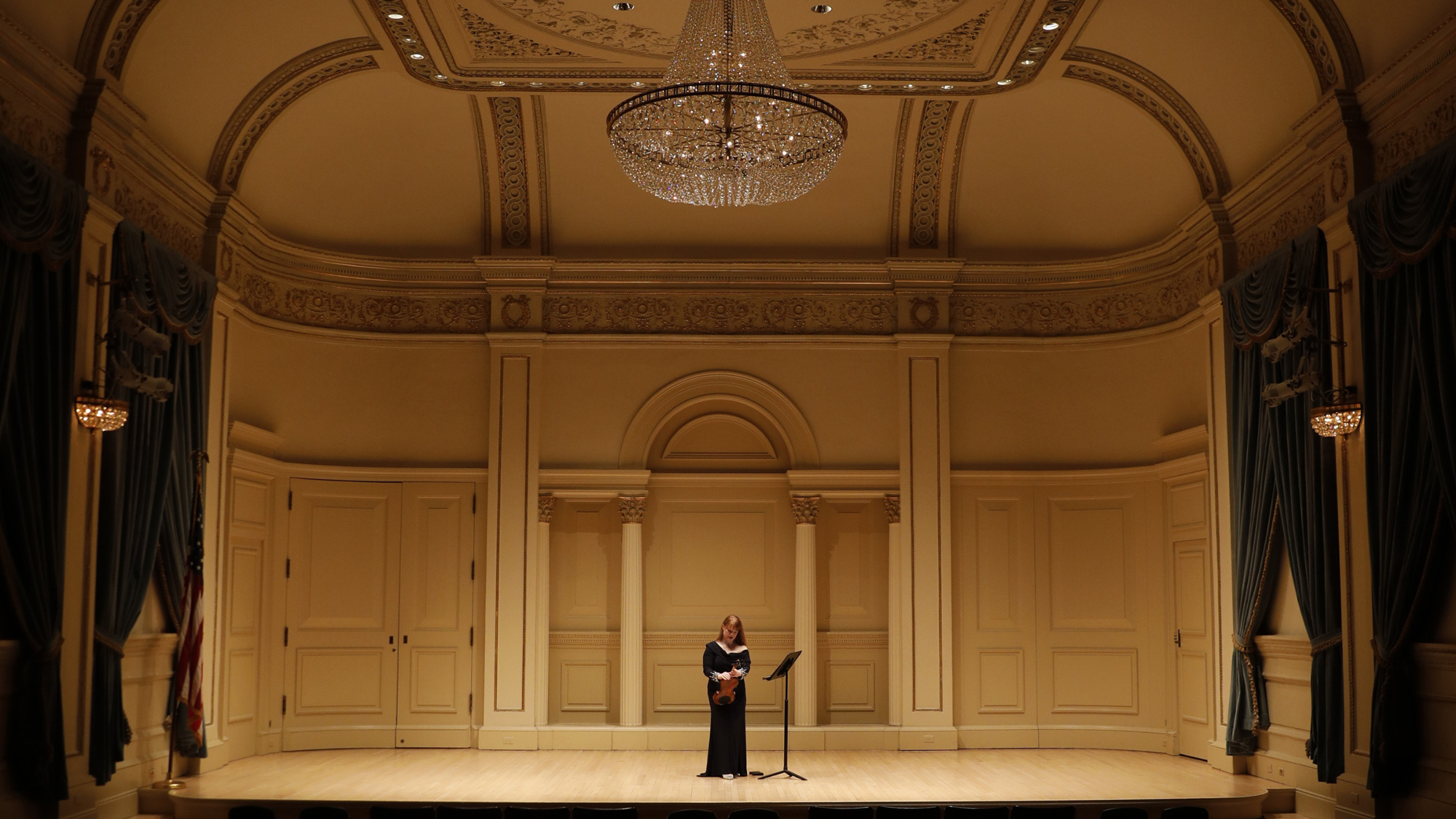
Megan Muta ’13 Bonta
“It was an incredible honor to do my New York solo violin premiere at Carnegie Hall, and the fact that I was given the opportunity to be the one to perform these for the first time live on a single violin is a dream come true!
“The program was called ‘A Glorious Dawn’ because it features the Glorious Mysteries of the rosary from H.F Biber’s masterpiece composed in the 1670s. The songs were lost until the early 1900s, and 14 of them highlight a special tuning technique called scordatura, which is Italian for ‘mistuning.’ The amount of study to learn about scordatura and the unique setting of the strings for these sonatas was a task that took about a year and half to prepare. It took hundreds of hours and pages of study, along with countless 2 a.m. practice sessions. I even wrote two books in the process, as I documented the changes in my own technique with 322 photos. The best example of this composition’s extreme tuning comes in Sonata XI, which is the Resurrection. To my knowledge, it is the only piece in the violin repertoire that requires the violinist to remove the two middle strings, cross them, and re-tune them from standard G-D-A-E into G-g-D-d tuning.
The most critical writings about these sonatas stated that it would be ‘ridiculous’ to play such pieces, where the musician would need 14 different violins to accomplish the performance.
“The first half of the program began with the five Glorious Mysteries and the second half featured a Passacaglia, which serves as the original ending of the 15-sonata, Baroque composition. The Carnegie performance concluded with Ralph Vaughan Williams’ The Lark Ascending, completing the title of the program – Glorious for the Mysteries and Dawn for the lark, a morning bird. Vaughan Williams highlights part of George Meredith’s poem before his hymn-like notes begin. The part that reads, ‘And ever winging up and up, / Our valley is his golden cup. / And he the wine which overflows / To lift us with him as he goes,’ reminded me of Jesus in the Eucharist, and that’s the reason I connected this 1914 romance for violin to the Carnegie performance.
“Even now, I am amazed that so little exists about these sonatas. There are very few performances, and even fewer recordings. I realized that by having my violin pegs adjusted I would be able to do the tunings that the composer designed, and I could do it all on one instrument. The most critical writings about these sonatas stated that it would be ‘ridiculous’ to play such pieces, where the musician would need 14 different violins to accomplish the performance. I felt that Carnegie Hall would be perfect for something so unique, and I am so glad they offered me a date to play the Mystery Sonatas on their historic stage.”
Meg is a 2013 Valpo graduate with Christ College honors. A lifelong musician, she and her husband, Austin, own and operate SoundTide Music School, where she also teaches students on 11 different string instruments. As of 2023, her students have accepted and achieved over $1.2 million in college scholarships. Meg and Austin reside in Portage, Indiana.
Originally published on the Valpo alumni guest blog.


